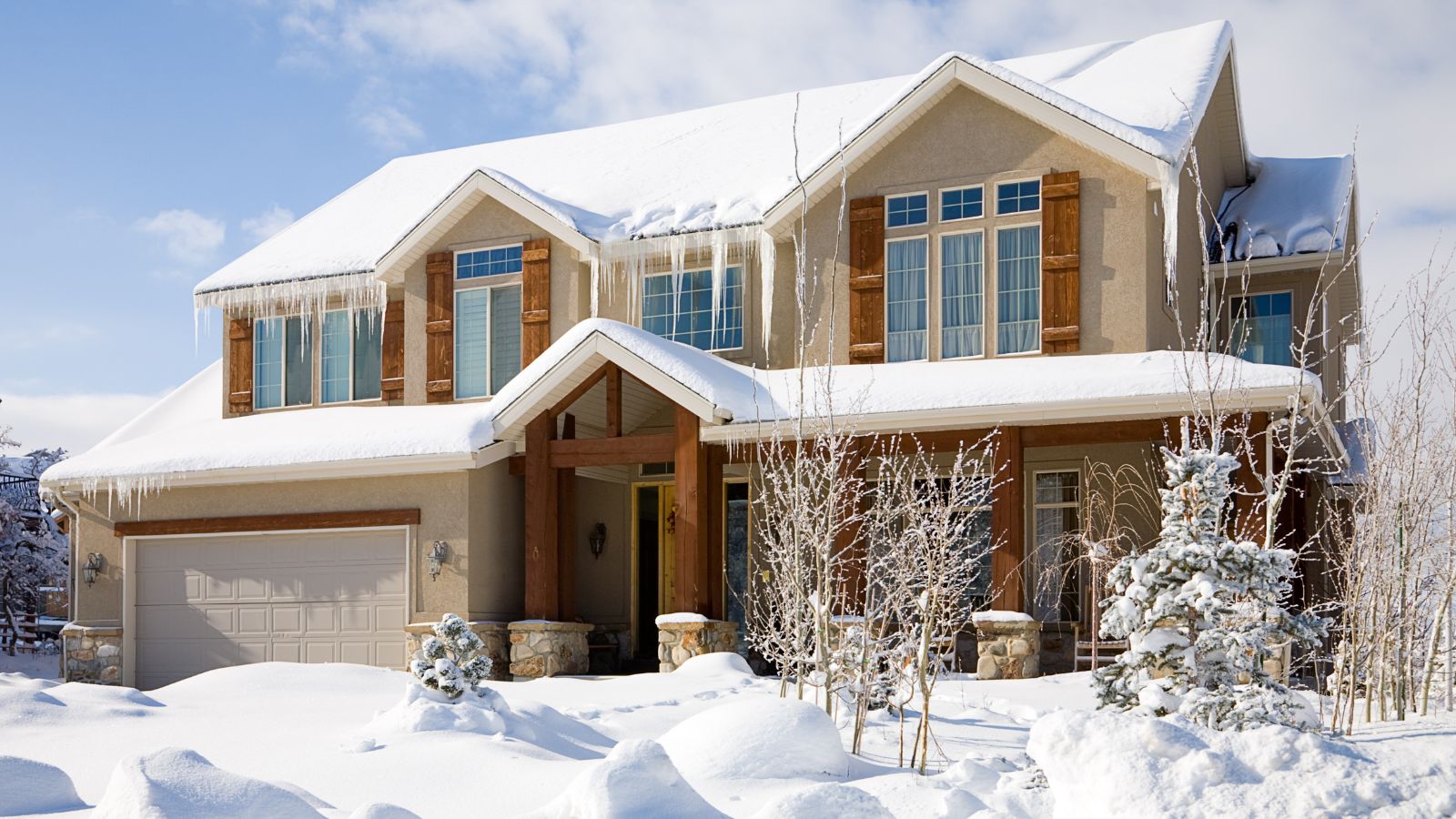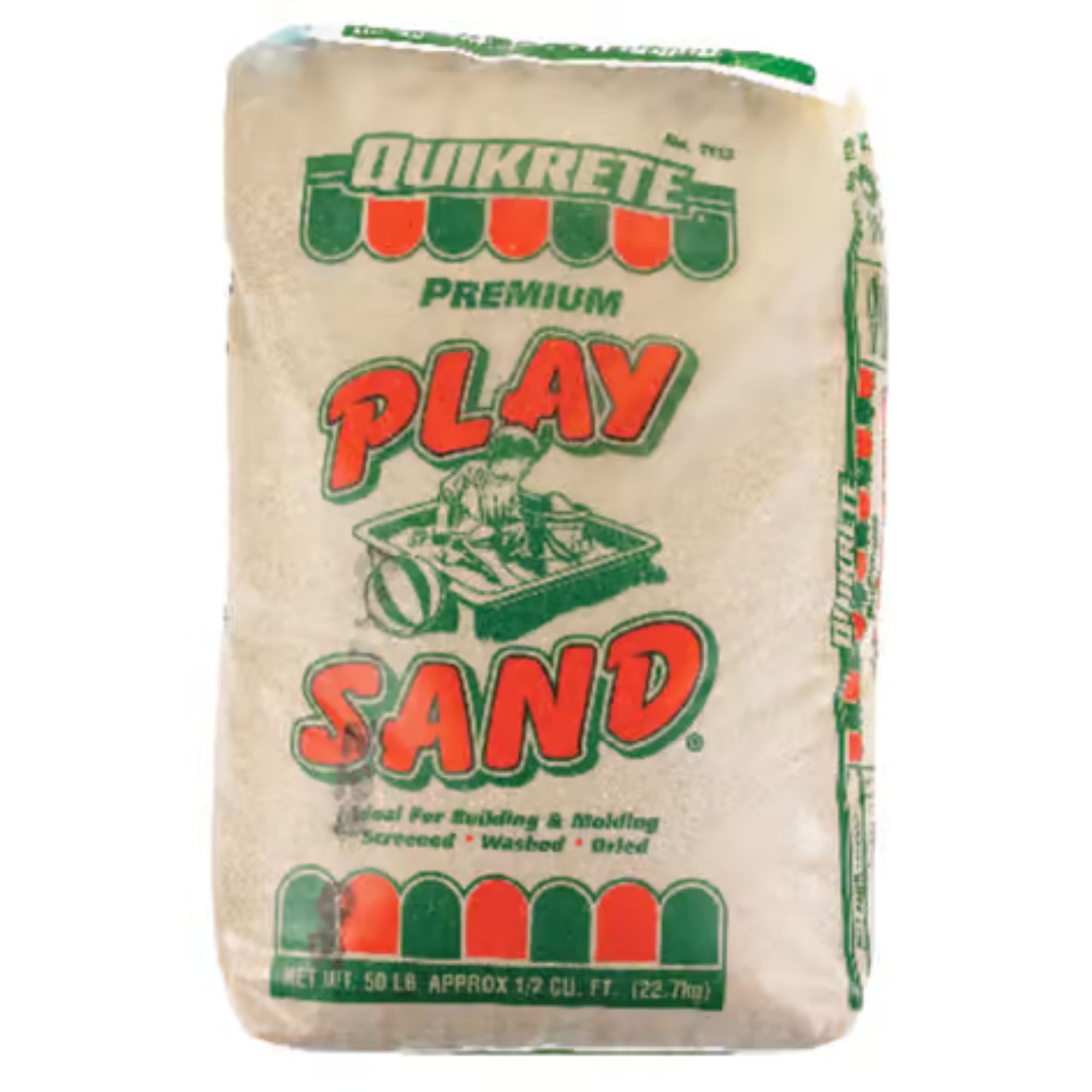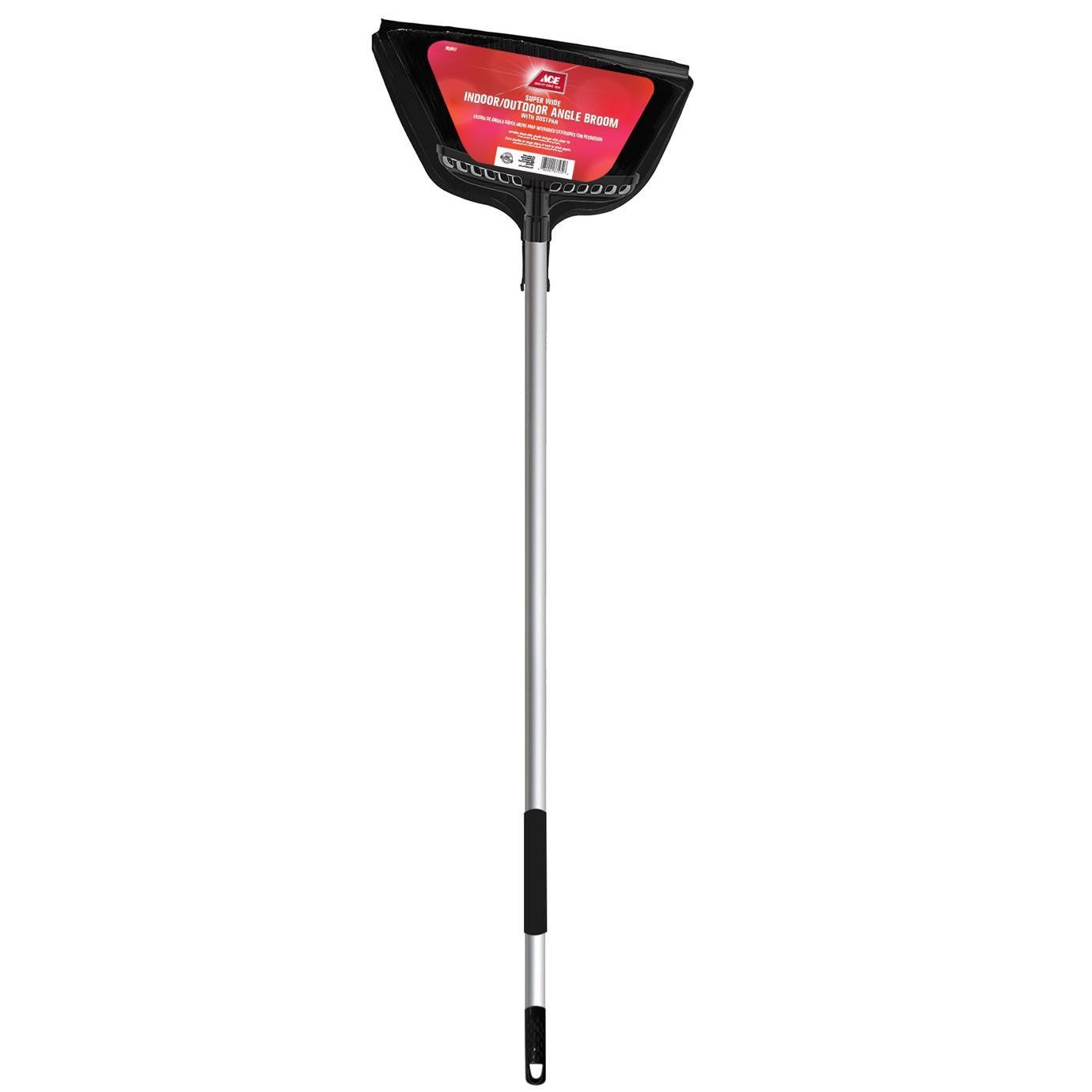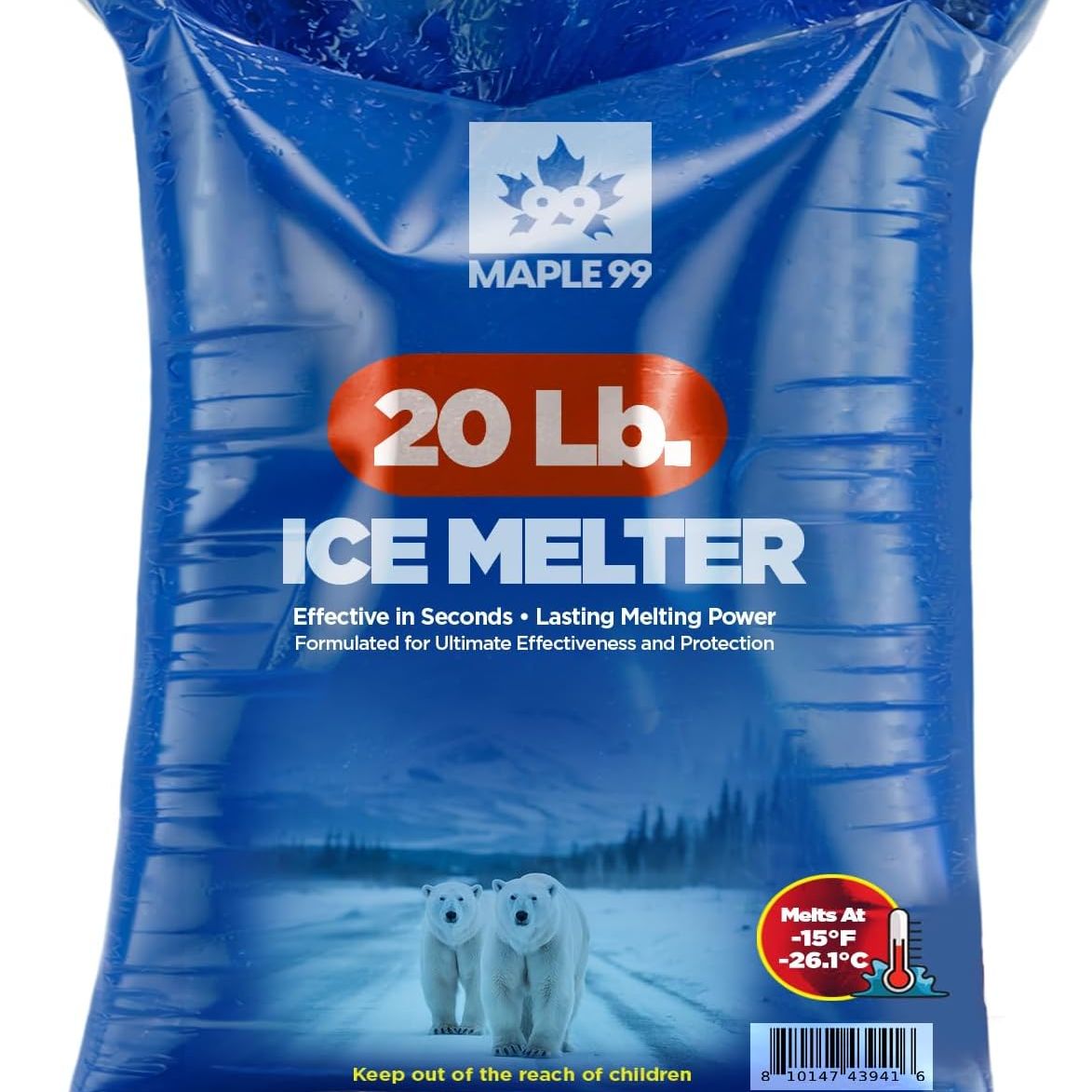Skip the Salt and Make Your Frozen Driveway Instantly Safe With This Cheap, Reusable, and Garden-Friendly Alternative For the ‘Freeze-Refreeze’ November Weather Cycle
No brute force is needed for this instant safety trick


If, like me, you don’t have the upper body strength or a strong enough back to crack up ice on your driveway with a pitchfork, shovel snow before it freezes, or repeatedly salt it for de-icing, then I have the perfect solution for you.
There is no need to de-ice your driveway to make it safe to walk or drive on. In fact, experts say sprinkling a thin layer of sand is actually the more affordable, easy, and garden-friendly swap to make this November, as the perpetual ‘Freeze-Refreeze’ weather cycle begins across most of the US.
This way, it adds instant grip for walking or driving, and when the ice melts, you can sweep up the sand, put it in a lidded bin, and reuse it when the next freeze comes. It’s a great home winterizing tip experts love.
Why Sand Is the Best Cheap Alternative to De-Icing Frozen Driveways This Winter
Michael Clarke, landscape architect, horticulturist, and founder of Yardwork, explains, ‘Sand is the best alternative for breaking up ice on a driveway. While rock salt (sodium chloride) is common, it can damage concrete and driveway surfaces since it accelerates freeze–thaw cycles, which leads to cracking, spalling, and long-term surface erosion, especially on concrete less than 1–2 years old.'
You can pick up a very affordable 50 lb bag of cleaned sand from Ace Hardware today. For quick home delivery, try Amazon's play sand.
There are many reasons to pick sand over salt. Michael adds, ‘Salt also harms nearby plants, soil, and lawns, because the runoff can accumulate in garden soil, dehydrating plants and causing leaf burn, root damage, and long-term soil imbalance. Additionally, salt spray and runoff increase rust on vehicles and metal components around the home.
‘Sand, on the other hand, doesn’t melt ice, but instead breaks up slick surfaces by improving grip immediately, making walkways and driveways safer to use right away. It's less expensive than a bag of ice melt and lasts for several uses.’
Design expertise in your inbox – from inspiring decorating ideas and beautiful celebrity homes to practical gardening advice and shopping round-ups.
Michael notes that as the ice melts, you can sweep up the sand, store it in a bucket, such as Walmart's lockable sand bin, and use it again next time, ‘reducing waste and because it contains no harmful chemicals, it won’t burn grass, pollute waterways, or damage soil biology like salt.’
This is particularly helpful if it’s not within your physical capacity to break up ice on your driveway, using pitchforks and other mechanical methods that often require a lot of upper-body strength and brute force. Salting isn’t easy either, as bags of it are heavy, shoveling is required, and it needs time to work before or after a freeze.
Head of Gardens at Homes & Gardens, Rachel Bull, adds, 'Using excessive amounts of salt on an icy driveway might seem like it makes perfect sense, but I always advise with caution because salt can play havoc with your lawn and your soil.
'Too much salt in the soil can leave plants unable to take up enough moisture and nutrients to thrive. It can even lead to problems such as leaf burn, where the tips of leaves turn brown and die. It can also mean brown, unsightly patches in lawns and seriously unhealthy grass.'
Quantities of Sand Versus Salt
Sand can be sprinkled a handful at a time on the area you need to walk on, and it makes a frozen driveway instantly easier to navigate. I recommend a spot spreader from Amazon to avoid that icky feeling on your hands, as you can scoop and spread without touching the sand.
Being able to sweep up the sand after the thaw and reuse it next time is a great way to be more sustainable at home, and in the long months of the freeze-thaw cycles will be much more economical.
For example, the average driveway in the US is 600 to 640 square feet, and to have enough salt to de-ice it, you’ll need 1-2 lbs of rock salt per 100 square feet, meaning for milder temperatures and pre-salting, you’ll need 6-6.4 lbs of salt, and on the high end, with severe cold or existing snow, you’ll need 12-13 lbs. This will need to be reapplied repeatedly, adding to costs and wastefulness as it cannot be reused.
Whereas with sand, you only need a thin layer to provide instant, temporary friction enabling you to walk on it safely, and a 50 lb bag is more than enough to cover the entire 600-640 square feet drive lightly. But remember, you only need to sprinkle it where you’re walking, or driving, and not the entire space, making your stash of reusable sand go an extremely long way during cold snaps and big freezes this winter.
Michael advises, ‘For best results, sand should be applied before walking or driving on newly formed ice. This gives you traction right away and prevents compacted, polished “black ice.”
‘Scatter a thin layer before a storm and again once the snow compresses into ice. If thick ice has already solidified into a smooth sheet, sand still provides traction, but you may need to rough up the surface first using a metal shovel edge or a garden hoe, before applying, since it won’t melt frozen slabs.’
This double-headed garden hoe from Amazon has a telescopic arm that collapses down when not in use, making it much easier to store as you won't need a full-height storage bin or shed to keep it out of sight.
And, if any sand makes its way to your grass or plant areas, fret now. Gardens pro Rachel adds, 'A little bit of sand on your soil can actually help to improve drainage, so you wouldn't need to worry if a small amount washes into your beds!'
When Do Freeze-Thaw Cycles Begin In the US?
Sand is helpful during any month with repeated freeze–thaw cycles, which Michael advises is typically:
- November to March in the Northern US.
- December to March in the Midwest and Northeast.
- October to April in the Mountain West.
- December through February in Southern states.
What to Shop

Cleaned, screened, and ready for use, this versatile sand can be used for driveway traction, and leftovers saved for the summer so your children or grandchildren to play safely with. You can pick it up in-store. For next-day home delivery, try Amazon’s play sand.

Avoid a sandy mess on your hands with this easy scoop and shake spot spreader. When you’re done, leave it in your sand bin for easy access whenever you need it.

After the ice or snow has thawed, sweep up the sand and store in an outdoor bin for reuse on the next freeze-thaw cycle this winter. Add a lock to secure your supply from opportunistic thieves.

This lightweight broom with dustpan has long arms so you don’t need to bend over to use it. You can use it indoors and out, and the stiff fibers on the broom are durable, making it perfect for sand sweeping.

This double-function hoe is perfect for gardening in the summer and home maintenance in the winter. Easily break up ice or compacted snow and when you're done, collapse the telescopic arm and store with ease in small spaces.

You can limit the amount of salt needed to make the outside of your home safe by using it only on the area by the front door and steps, where slips and falls are more likely to occur. This snow melt is effective to -15.
Meet the Expert

Michael is the founder of Yardwork and Pulled, the online platforms for everything home and garden. Yardwork is an online plant and tree nursery and landscaping platform. Pulled is an online platform for booking every home service from plumbing to landscaping, HVAC, and more. Michael is a designer with a degree in landscape architecture and horticulture from the University of California Davis. He was previously the founder of a landscape development and maintenance company, where he provided complete landscape services to homeowners and commercial property owners and installation services for multi-million dollar municipality projects. Michael is passionate about sustainable design and technologies that can bring about positive change and create lasting positive impressions on our built environment.
Next, learn how to prepare your home for freezing weather and the key items experts advise keeping on hand ahead of extreme cold weather.

Punteha was editor of Real Homes before joining Homes and Gardens as Head of Solved. She has written and edited wellbeing, lifestyle and consumer pieces for the national press for 17 years, working across print and digital newspapers and magazines. She’s a Sunday Times bestselling ghostwriter, former BBC Good Food columnist and founding editor of independent magazine, lacunavoices.com. Punteha loves keeping her home clean, has tested and reviewed the latest robot vacuums and video doorbells, enjoys cooking, DIY, decluttering and spending weekends personalizing and organizing her newly-built home, tackling everything from plumbing to tiling and weatherproofing, to home fragrancing and cleaning with luxurious smelling homemade solutions.
You must confirm your public display name before commenting
Please logout and then login again, you will then be prompted to enter your display name.